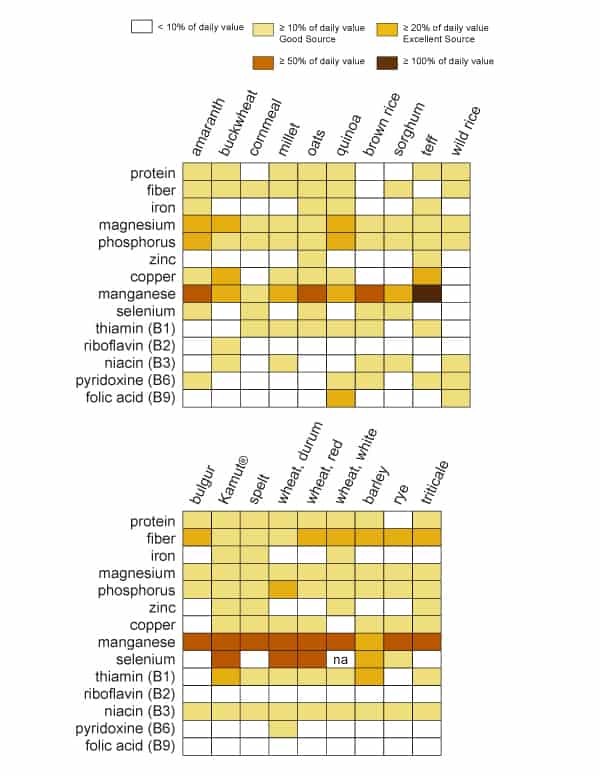You are probably thinking, I already know this. I hear it all the time! And, you probably have. Ads, commercials, pamphlets, doctors, etc. I’m sure they have all told you. However, did they give any reasons other than “It’s healthier.” I wanted to know exactly why it’s better for you. Why shouldn’t someone continue to only eat white bread, white rice, regular pasta? While I personally like the flavor of whole grains better than that of refined, I know a lot of people who don’t. So, here are the facts. This is why you should make the switch:
Whole grain, just by the name, indicates that no part of the grain is removed. This means that their bran and germ are still intact giving it more fiber, protein, magnesium, selenium, potassium, etc.
Refined grain, you got it, has the bran and germ removed and thus is lacking in the above mentioned nutrients. This makes consuming refined grains a way of depriving your body of essential nutrients.
Here’s a couple of charts that shows the nutrients in just some of the different grains:
*These amounts are based on FDA standard serving sizes, 45g.
 |
| http://wholegrainscouncil.org/whole-grains-101/whole-grains-an-important-source-of-essential-nutrients |
Okay, I think we all understand that there are a lot of nutrients that can be had by consuming whole grains. But why is this important, how do the added nutrients help you on a daily basis? Well, the nutrients provide energy giving you strength to get through your day, the fiber makes you feel full causing you to consume less and helps with your digestive system. If you have problems with your blood sugar, eating whole grains will help with spikes due to your body taking longer to digest the grains. Regular whole grain consumption is also known to lower triglyceride levels which your heart will thank you for, oh, and it helps with your blood pressure too. Another thank you from your heart!
So we have:
- Energy
- Essential vitamins and minerals
- Healthy Digestive System
- Weight Management
- Level Blood Sugar
- Lower Triglycerides
- Lower Blood Pressure
- Happier Heart
That is just a non-technical list. However, I think that is enough to show the importance of making the switch.
Just a few examples of where you can easily find whole grains:
- Brown Rice
- Oatmeal
- Popcorn
- Barley
- Quinoa
- Millet
- Wild Rice
- 100% Whole Wheat/Grain Pastas, Breads, Crackers
You may not like your first experience with whole grain pasta or bread, but don’t give up after your first experience. Different brands taste differently. And remember, just because it is brown or says wheat on the package does not mean that the product is “whole,” in fact, if it doesn’t say whole grain or whole wheat, it most likely contains mainly refined grains. Be sure to read labels!
All information complied for this post came from the following resources:
American Diabetes Association – Whole Grain Foods
Mayo Clinic – Whole Grains: Hearty Options for a Healthy Diet (This site cool has interactive pictures! Well, cool if you like “science-y” things like me. . .)
Whole Grains Council – What are the Health Benefits? (If you are interested in more in-depth explanations, this site contains many statistics of national studies proving the benefits.)
